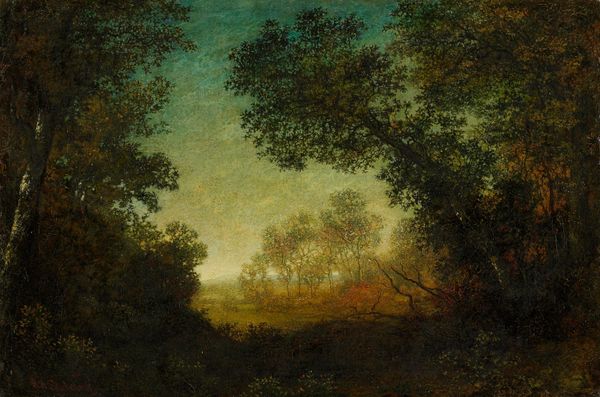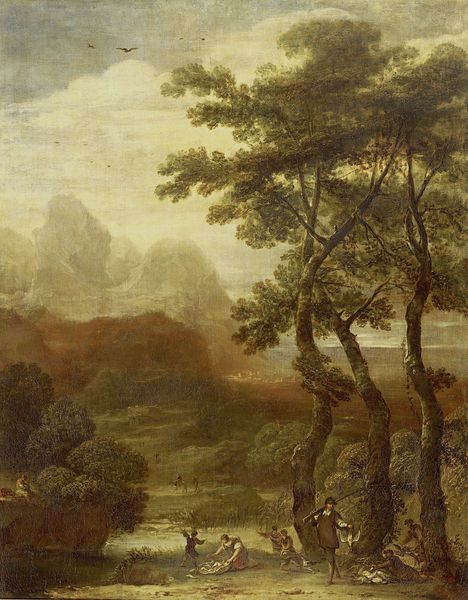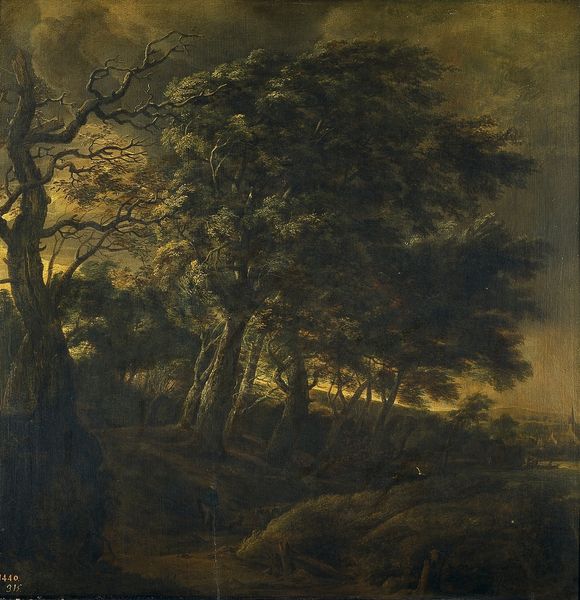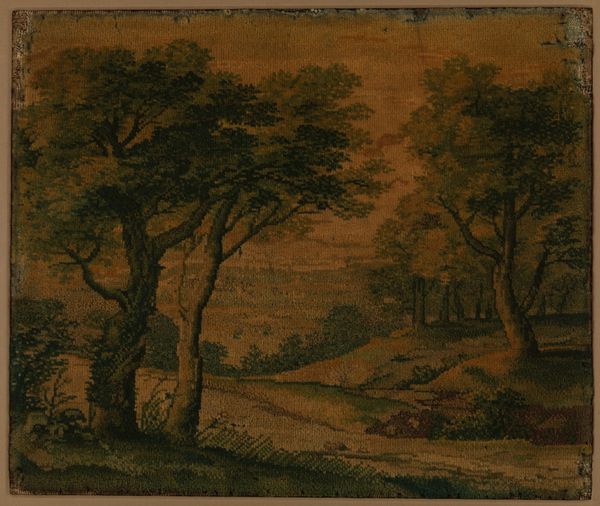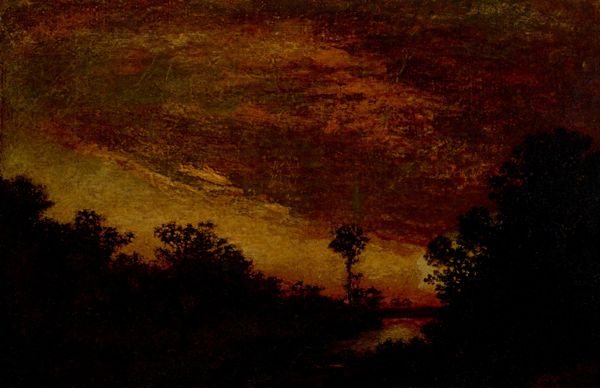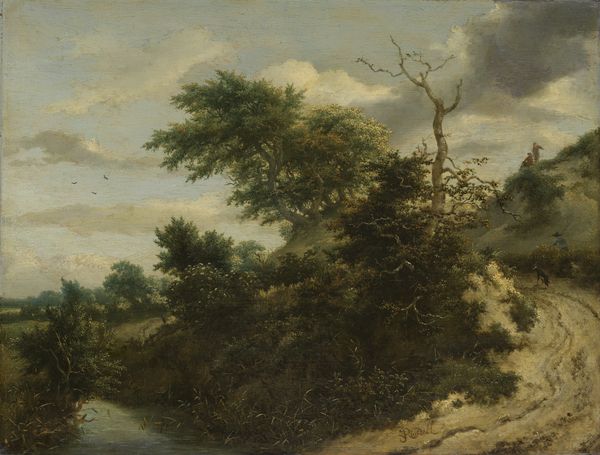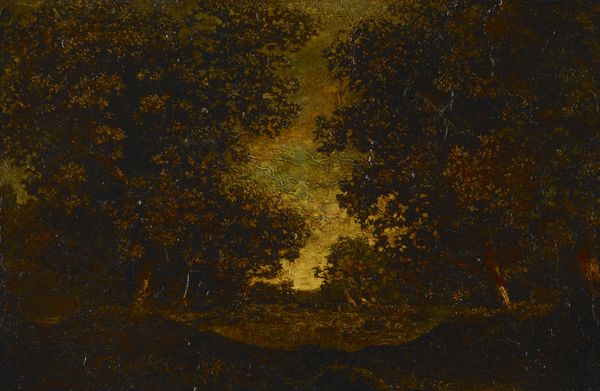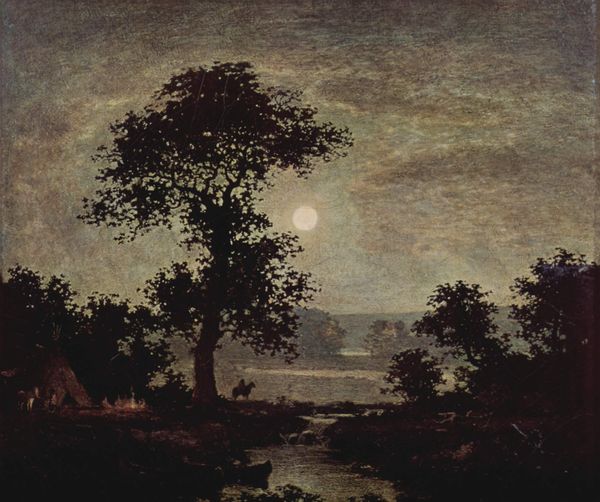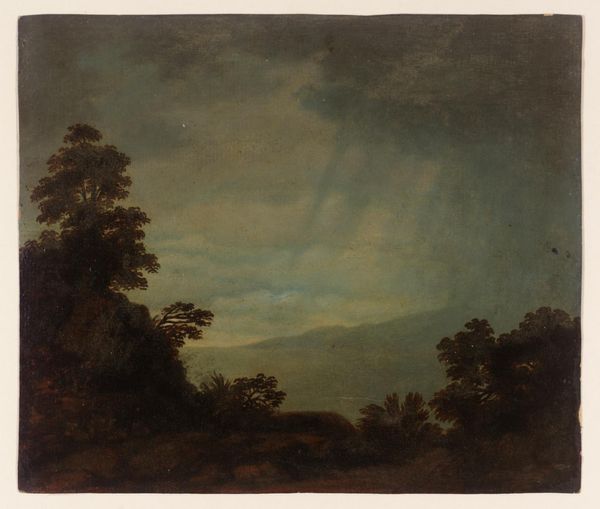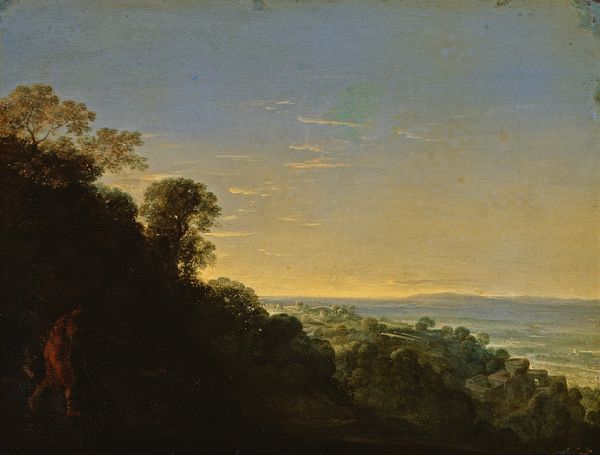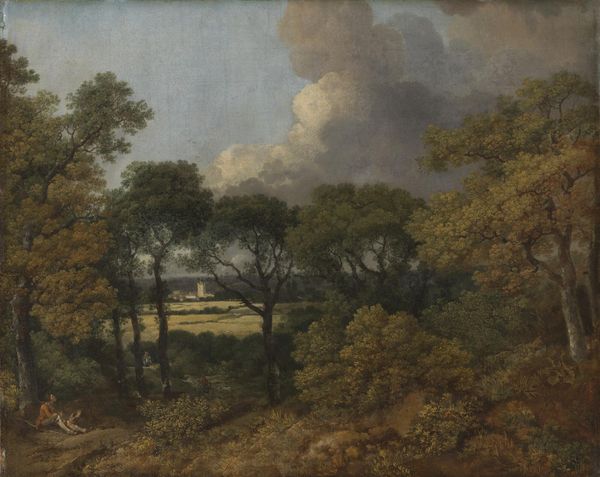
painting, plein-air, oil-paint, impasto
#
tree
#
sky
#
painting
#
plein-air
#
oil-paint
#
landscape
#
oil painting
#
impasto
#
romanticism
Copyright: Public domain
Editor: Here we have Ralph Blakelock's "Woodland Vista," painted in oil using, it looks like, an impasto technique. It's a captivating landscape, though quite dark and subdued. What catches your eye when you look at it? Curator: Immediately, I'm drawn to the materiality. Look at the density of the oil paint. Blakelock layers pigment upon pigment, creating a textured surface that isn’t just representational, but actively constructed. How do you think the *act* of painting itself – the labor involved – informs the feeling we get from this image? Editor: That’s interesting! I hadn't considered the labor aspect so directly. The darkness makes me think of dusk, maybe even melancholy. Does the impasto relate to the way the artwork has aged? Curator: Absolutely. The material's age plays a significant role. We need to think about the availability of materials too – where did Blakelock source his pigments? How did that affect the tones and textures we see? Also consider, how accessible was painting en plein air to the average artist? It points towards the consumption and production systems of the time. Editor: So you're saying the painting is more than just an image, but a product of its time? Curator: Precisely. The layering and application suggest an almost obsessive process. It begs the question, what was the social status of a landscape painter then? Was this romantic view of nature in competition with increasing industrialization? Editor: I guess seeing the materials and production gives the image another story. Thanks for widening my view! Curator: Indeed, it shows that appreciating art comes from understanding both the artistic act and the socioeconomic landscape.
Comments
No comments
Be the first to comment and join the conversation on the ultimate creative platform.
